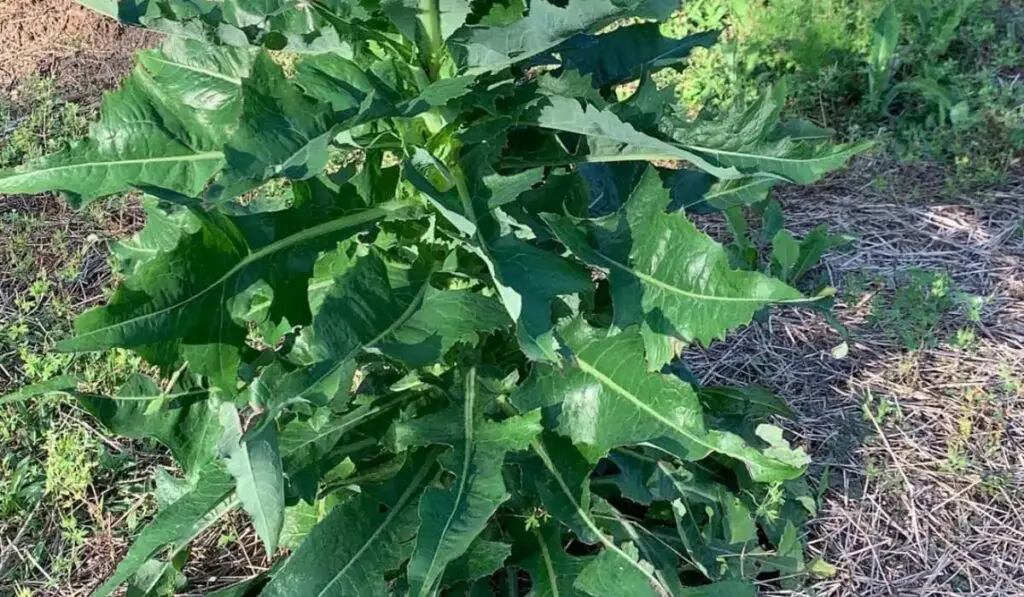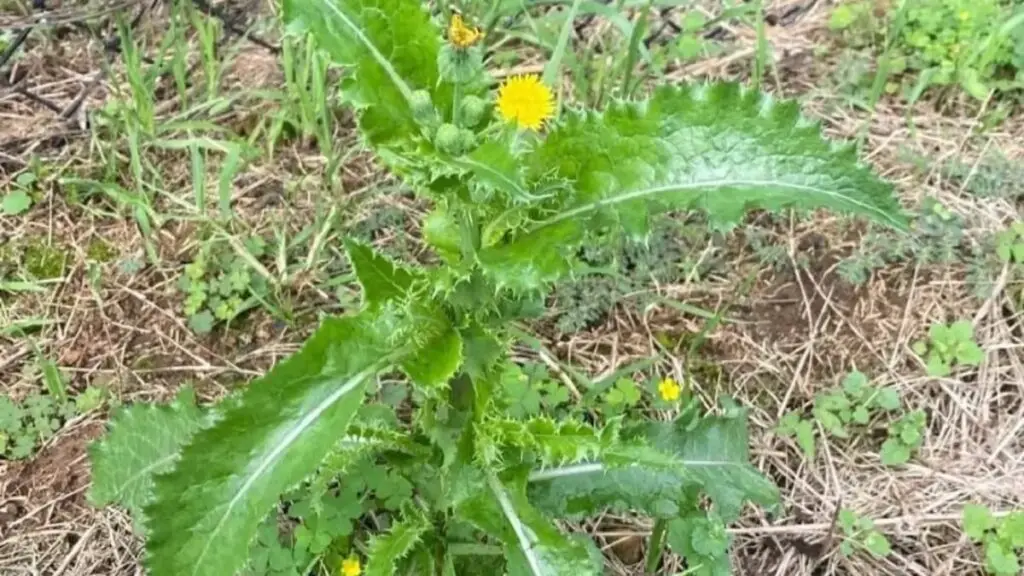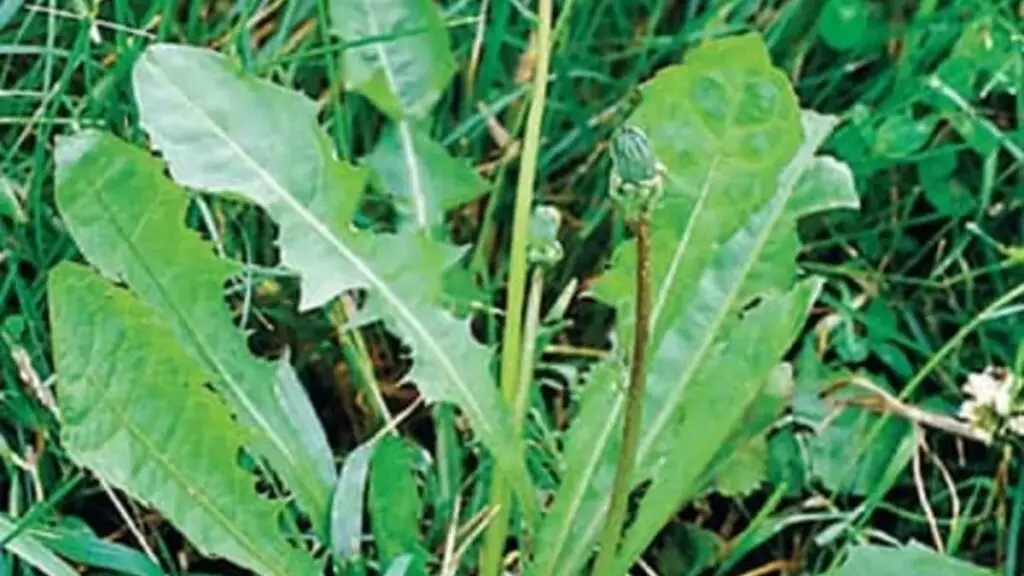Nothing worries gardeners more than weeds invading their vegetable gardens. Things can worsen if these weeds resemble the plants in your garden.
If you have a section in your garden where you grow lettuce, it’s crucial to look out for any weed invasion. Sometimes, you might find lettuce looking weeds growing alongside your lettuce. What if you like foraging for lettuce and want to differentiate the plant from its look-alike weeds?
Luckily, this article discusses weeds that look like lettuce, their physical characteristics, where they grow, and more.
Contents
Wild Lettuce
Wild lettuce (bitter lettuce) is a common weed growing in pastures, meadows, roadsides, and riverbanks. This plant loves plenty of sunlight and little competition from other plants. If you find this weed in your garden, you might mistake it for lettuce.
Garden lettuce and wild lettuce share many common characteristics during their first few months of growth. For example, both plants have long leaves growing in a rosette form while young. The leaves will also feature a central vein.
You will start to see distinguishing features with time. Wild lettuce leaves take an oblong shape with prickles on the edges. The undersides of wild lettuce leaves feature prickly hairs.
When it comes to growth height, this weed can grow 3-8 feet tall. The weed blooms in late summer and early fall, producing yellow flowers. These flowers eventually grow into clusters with seeds.
Another way to identify wild lettuce is through its unpleasant smell.
Caution: While wild lettuce is known to have some health benefits, it can be toxic when ingested. Eating the weed might cause nausea, vomiting, anxiety, breathing issues, and dizziness.

Thistle
Thistles are annual, biennial, or perennial weeds that resemble lettuce. They are commonly found on cultivated lands, roadsides, trails, pastures, and old fields with moist or dry soils. Thistles are invasive and can choke out your lettuce in the garden.
There are several types of thistles, but most resemble lettuce. Most of these weeds are hard to differentiate from lettuce while young. Thistle leaves form rosette patterns growing close to the ground. Unlike lettuce, these weeds grow more than six feet tall as they mature.
Like other weeds that look like lettuce, it’s easier to tell the difference between thistles and lettuce by looking at their leaves. Lettuce leaves are soft and smooth to the touch.
Conversely, thistle leaves are prickly with wooly undersides. Thistles have elongated leaves that point upward.
Thistles bloom in early summer, producing pink or purple flowers. The flowers are round, with spikes growing from the flower head.

Dandelion
Dandelions are lettuce looking weeds that grow all over the world. They’re more common in North America on meadows, gardens, pastures, lawns, and roadsides.
Dandelions are perennial plants that grow with a deep tap root. They prefer shady areas but will also thrive in direct sunlight.
Like lettuce, dandelions form a rosette of bright-green leaves. However, dandelions have lobed leaves with serrated edges. They also produce a milky sap when plucked out of the stems.
When it comes to growth size, lettuce is taller than dandelions. A dandelion weed will grow up to three feet tall. Bright yellow flowers appear mostly from May to June and grow on a single stem.
The stems of lettuce and dandelions are also different. Lettuce has hard stems, while dandelions grow soft, hollow stems.
Some people use dandelions as sources of food or medicine. You can eat its leaves raw or cook them. Also, add young dandelion seeds and leaves to your salads, stews, or juices.

Chicory
Chicory is another weed that looks like lettuce. It’s a perennial wild flowering plant native to Central Europe and Asia.
The weed belongs to the same Asteraceae family as lettuce, thus sharing common characteristics. Some gardeners in the United States grow this weed for commercial purposes.
As a weed, chicory will grow anywhere the wind scatters its seeds. You can find this weed in pastures, roadsides, gardens, and waste areas. So, how can you distinguish chicory from lettuce in your garden?
While both plants grow leaves in a rosette pattern, the shapes differ. Chicories have elongated leaves with an oval or egg shape. Their leaves appear rugged with pointed tips.
Chicory stem is hairy and grows up to 4’ tall. This weed blooms from July to October, producing blue or purple flowers, but you might occasionally find them white or pink. These flowers tend to close and open during the day to protect themselves from excessive sun exposure.
Generally, chicories will grow larger than lettuce, especially at full growth.

Milkweed
Milkweeds are perennial flowering weeds that look like lettuce. The name “milkweed” comes from the milky sap that oozes from its leaves and stems after injury.
These weeds are common in America and Africa, thriving on well-drained soils and under full sun. You’ll often find milkweeds in your yard, garden, and wet meadows. Identifying this plant is crucial to avoid mistaking it for lettuce or a poisonous shrub called dogbane.
One of the best ways to differentiate milkweed from lettuce is by the seeds. Milkweed seeds are flat and reddish-brown, with one end featuring silky hair. You’ll usually see monarch butterflies and caterpillars on this weed.
The leaves of milkweed are large and oval-shaped. They’re rubbery textured with fine soft hairs. Milkweeds bloom from June to August, producing purplish-pink flowers. Their stems are thick and grow between 4-6 feet tall.
Cat’s Ear
Cat’s ear (flatweed or false dandelion) is a perennial weed native to Europe. The weed has hairs on the leaves whose shape and texture resemble hairs on a cat’s ears. It also resembles the true dandelion, hence the name “false dandelion.”
Cat’s ear is an invasive and low-growing weed common in lawns, pastures, fields, meadows, and roadsides. It’s shorter than lettuce, reaching up to 12 inches in height.
Due to its long taproot, the weed can regrow if not uprooted properly. If this weed grows in your lawn, dig it up to remove the taproot.
Most people mistake a cat’s ear for lettuce because its leaves form a rosette pattern at the base. It produces puffball seed heads, similar to the true dandelion. This weed blooms in summer, producing small, yellow flowers.
Lamb’s Quarters
Lamb’s quarters, also known as wild spinach, is an annual, invasive weed native to Europe. It’s a hardy weed that’s also common in America and Canada. The weed thrives in partial shade or full sun in gardens, fields, trailside, and roadsides.
If this weed grows in your garden, you can mistake it for lettuce or spinach. However, the weed’s diamond-shaped to triangular egg-shaped leaves grow 1” -2.5” long. The stalks are thin and attach to soft branches.
This weed can grow up to six feet tall. Lamb’s quarters weed blooms from mid-summer to fall. It produces inconspicuous green flowers that grow in granular clusters. Flowers grow on the main stem and the upper branches.
Fortunately, if you have lamb’s quarters weeds in your garden, you can consume their leaves or young shoots. You can eat lamb’s quarters raw in salads or cook them like lettuce.
Final Thoughts
Weeds that look like lettuce are common in gardens, lawns, or disturbed areas. Some are safe to eat, while others, like wild lettuce, are toxic. If you prefer adding lettuce to your recipes, it’s crucial to distinguish the plant from its look-alike weeds. Lettuce and these weeds can vary in leaf shapes, plant sizes, flower colors, and blooming time.
Hello! My name is Chris, and I am the founder of Yard Floor. When I was a toddler, my family had a lush green lawn. I was at the center of caring for and maintaining this lawn and even proceeded to take an associate’s Degree in landscaping. I am here to share my years of experience with you – be it repairing your mower/tractor or caring for your lawn.